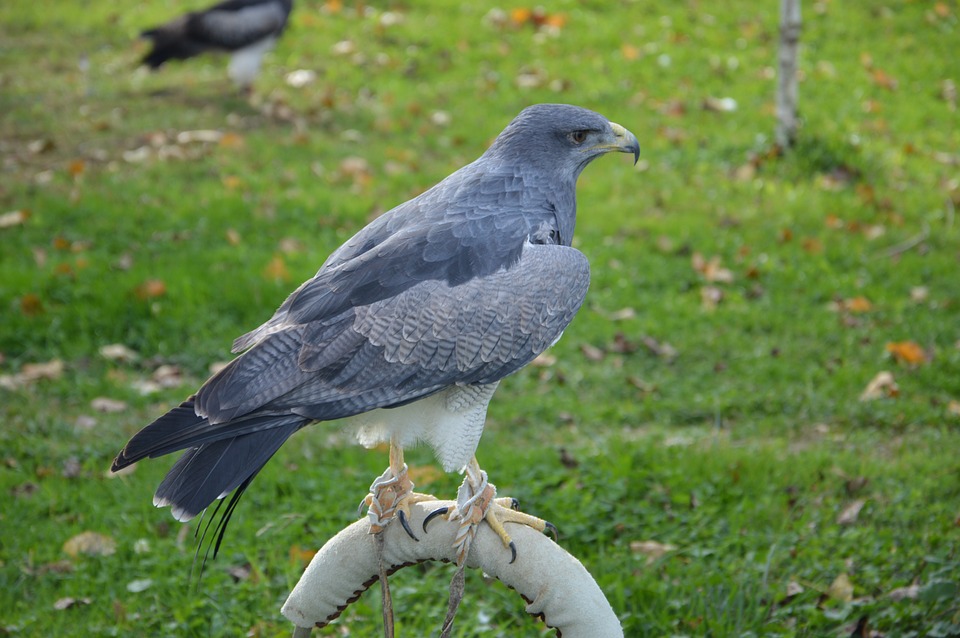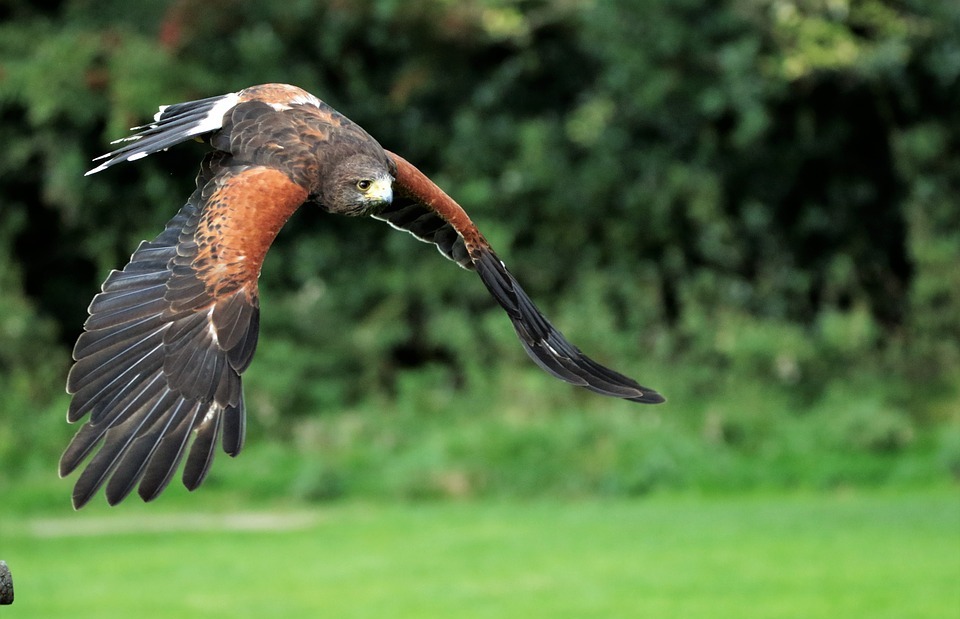This article delves into the captivating world of hawks, exploring their dietary preferences and hunting strategies, particularly focusing on their relationship with rabbits. We'll unveil the intricate feeding habits of various hawk species, dissect their hunting techniques, and examine the factors influencing their prey choices. Join us as we uncover the fascinating interplay between hawks and rabbits, shedding light on their ecological roles and the delicate balance they maintain in the natural world.
Part 1: Unveiling the Hawk's Dietary Tapestry

1.1. A Diverse Family of Aerial Predators
Hawks, belonging to the diverse family Accipitridae, encompass a remarkable array of species, each with distinct characteristics, from their size and coloration to their hunting techniques. Classified as raptors, these birds boast powerful talons and sharp beaks, perfectly adapted for capturing and consuming their prey.
1.2. The Role of Size and Availability in Hawk's Diet
The type of prey a hawk targets is dictated by its size and the availability of suitable food sources within its habitat. Smaller hawk species, such as the American Kestrel, often rely on insects, small rodents, and reptiles. In contrast, larger hawks, including the Red-tailed Hawk, can take down larger prey like rabbits, snakes, and even small mammals.
1.3. Adaptability: Key to Survival in Diverse Habitats
Hawks display remarkable adaptability, thriving in a wide range of environments, from dense forests and woodlands to open grasslands, arid deserts, and even bustling urban settings. This adaptability influences their dietary choices, as they must adjust to the specific prey available in their surroundings.
Part 2: Hawk Hunting: A Symphony of Skill and Precision

2.1. Masters of the Air: The Hawk's Aerial Prowess
Hawks are renowned for their exceptional aerial agility and speed, utilizing these skills to locate and capture prey. Their sharp talons, designed for gripping and tearing, play a crucial role in their hunting success.
2.2. The Art of Perching and Pouncing: A Patient Hunter's Strategy
Many hawk species employ a "perch and pounce" hunting strategy, selecting a prominent vantage point like a tree branch or a telephone pole, patiently observing their surroundings. Once prey is spotted, they launch into a swift and precise attack, relying on their powerful wingbeats and sharp talons to secure their meal.
2.3. Sight and Sound: The Hawk's Sensory Arsenal
Hawks possess exceptional eyesight, enabling them to spot prey from great distances. Their keen hearing also plays a vital role in detecting the movements of potential targets, particularly in dense vegetation where visual cues are limited.
Part 3: The Relationship Between Hawks and Rabbits: A Predator-Prey Dynamic
3.1. Rabbits: A Valuable and Plentiful Prey Item
Rabbits, with their abundance in various habitats, often feature on the menu of numerous hawk species, particularly larger hawks. Their size and nutritional content make them an attractive prey item, providing a substantial source of energy for the predators.
3.2. Hawk Species Known to Prey on Rabbits
Several hawk species, recognized for their size and hunting prowess, are known to include rabbits in their diet. These include:
- Red-tailed Hawks: These common and adaptable hawks are frequent predators of rabbits, especially in open habitats. They are known to hover above their prey before diving down with their talons extended.
- Cooper's Hawks: While smaller than Red-tailed Hawks, Cooper's Hawks are still capable of taking down rabbits, particularly young or smaller individuals. They use their agility and speed to chase after their prey through dense vegetation.
- Ferruginous Hawks: Found in grasslands and deserts, these large hawks are renowned for their impressive size and strength, making them capable of capturing even larger rabbits. They often hunt from the ground, using their sharp talons to grab their prey.
- Northern Harriers: These marsh-dwelling hawks are skilled hunters, often using their keen eyesight and low-flying techniques to ambush rabbits. They are known for their distinctive hovering flight pattern, allowing them to scan the ground for prey.
- Rough-legged Hawks: These migratory hawks, known for their feathered legs, can be found in both open grasslands and forested areas. They often hunt from the ground or perch on fence posts, waiting for rabbits to come within striking distance.
3.3. Factors Influencing the Hawk's Prey Choice
Whether a hawk will target a rabbit depends on several factors, including:
- Hawk size and strength: Larger hawks, with their greater strength and hunting prowess, are more likely to target rabbits.
- Rabbit population density: The abundance of rabbits in a particular area increases the likelihood of hawks hunting them.
- Availability of other prey: If other preferred prey items are scarce, hawks may turn to rabbits as an alternative food source.
- Hunting conditions: Terrain, vegetation cover, and weather conditions can influence the success of hunting rabbits. For example, hawks may struggle to capture rabbits in dense forests with limited visibility.
- Rabbit behaviour: Young, weak, or injured rabbits are more vulnerable to hawk attacks.
Part 4: The Hunt: A Detailed Look at Hawk Strategies
4.1. The Precision Strike: Capturing Prey with Talons
Hawks use their sharp, powerful talons, designed for gripping and tearing flesh, to capture and subdue their prey. Their strong grip prevents the rabbit from escaping, while their talons' sharpness inflict wounds that can quickly incapacitate the prey.
4.2. The Power of a Dive: A Hawk's Aerial Assault
Hawks often use their aerial prowess to capture rabbits. They may hover above their prey before diving down with their talons extended, striking with incredible speed and force. This technique allows them to quickly overpower rabbits and minimize the risk of escape.
4.3. The Importance of Stealth: The Art of Ambush Hunting
Hawks are skilled ambush predators, often relying on their camouflage and stealth to approach their prey undetected. They may perch in trees or bushes, patiently observing the area until a rabbit comes within striking distance. This hunting strategy allows them to surprise their prey, increasing their chances of a successful capture.
Part 5: Beyond the Hunt: The Hawk's Impact on the Ecosystem
5.1. Maintaining a Delicate Balance: The Hawk's Role as an Apex Predator
Hawks, as apex predators, play a crucial role in regulating the populations of their prey species, including rabbits. By keeping rabbit populations in check, they prevent overgrazing and ensure the health and stability of their ecosystem. This delicate balance is essential for the well-being of other species that rely on the same resources.
5.2. The Interplay of Predator and Prey: Evolutionary Adaptation
The relationship between hawks and rabbits exemplifies predator-prey dynamics. The presence of hawks encourages rabbits to be vigilant and adaptable, leading to natural selection favouring those with better survival skills. In turn, hawks evolve to become more efficient hunters, ensuring their own survival. This ongoing evolutionary interplay shapes the behaviours and characteristics of both predator and prey.
5.3. Conservation and Human Impact: Protecting Hawks and Their Habitats
Habitat loss, pesticide use, and other human activities can threaten hawk populations, disrupting the natural balance of ecosystems. Conservation efforts play a crucial role in protecting hawks and their habitats, ensuring the preservation of these majestic birds and their ecological importance.
Part 6: FAQs
6.1. Can a Hawk Kill a Rabbit with Its Talons?
Yes, hawks can kill rabbits with their talons. Their sharp, powerful talons are designed for gripping and tearing flesh, allowing them to subdue and kill prey effectively. The strength of their grip prevents the rabbit from escaping, while their talons' sharpness inflict wounds that can quickly incapacitate the prey.
6.2. Are Hawks the Only Predators of Rabbits?
No, hawks are not the only predators of rabbits. Various other animals, including foxes, coyotes, bobcats, and even snakes, prey on rabbits. These predators often use different hunting strategies and target different age groups of rabbits.
6.3. Do Hawks Always Eat Rabbits Whole?
While hawks can swallow small prey items whole, they typically tear larger prey like rabbits into smaller pieces using their beaks and talons. They then consume the meat, leaving behind bones and fur. This method allows them to digest the meat more efficiently.
6.4. How Often Do Hawks Eat Rabbits?
The frequency with which hawks eat rabbits varies depending on the availability of prey and the hawk's size and species. Some hawks may consume rabbits regularly, while others may only occasionally include them in their diet. The abundance of rabbits in a particular area can also influence their presence in a hawk's diet.
6.5. Do Hawks Prefer to Eat Baby Rabbits?
Hawks may target baby rabbits due to their smaller size and vulnerability. However, adult rabbits are also frequently preyed upon, especially if they are young or weak. The hawk's preference may also vary depending on the availability of other prey.
6.6. Can Hawks Be Dangerous to Humans?
While hawks are predators, they are generally not a threat to humans. They are more likely to be intimidated by humans than to attack. However, it's essential to maintain a respectful distance and avoid disturbing them, especially when they are nesting or feeding.
6.7. Do Hawks Eat Domestic Rabbits?
Hawks may occasionally prey on domestic rabbits, particularly if they are kept outdoors or in unsecured enclosures. It's important to protect domestic rabbits from predators by keeping them in secure environments, such as rabbit hutches with wire mesh fencing.
6.8. How Can I Help Protect Hawks?
You can help protect hawks by supporting conservation efforts, such as habitat restoration, pesticide reduction, and reducing human-wildlife conflicts. You can also learn about local hawk populations and avoid disturbing them during nesting season.
6.9. What Are Some Interesting Facts About Hawks?
Hawks are fascinating birds with many intriguing characteristics. Some interesting facts include:
- Hawks can see up to eight times better than humans.
- They have exceptional hearing, which allows them to locate prey even in dense vegetation.
- Hawks are known for their powerful wingbeats and soaring flights, enabling them to cover vast distances.
- Hawks can reach speeds of over 100 miles per hour during a dive.
Everyone is watching
-

Do Rabbits Lay Eggs? (The Surprising Truth)
OTHER TYPES OF PETSThis article will unravel the common misconception that rabbits lay eggs, exploring the fascinating world of r...
-

Can Rabbits Eat Grapes? A Guide to Safe Rabbit Treats
OTHER TYPES OF PETSThis comprehensive guide will explore the safety and suitability of grapes for rabbits, providing detailed inf...
-

What's a Group of Rabbits Called? (A Comprehensive Guide)
OTHER TYPES OF PETSThis article delves into the fascinating world of rabbits, exploring the various terms used to describe a grou...
-

Predators That Hunt Rabbits: A Guide to Natural Enemies
OTHER TYPES OF PETSI've always been fascinated by the circle of life, that delicate dance between predator and prey. Growing up ...
-

Are Rabbits Nocturnal Animals?
OTHER TYPES OF PETSThe question of whether rabbits are nocturnal animals is a fascinating one, with a surprisingly complex answer...
